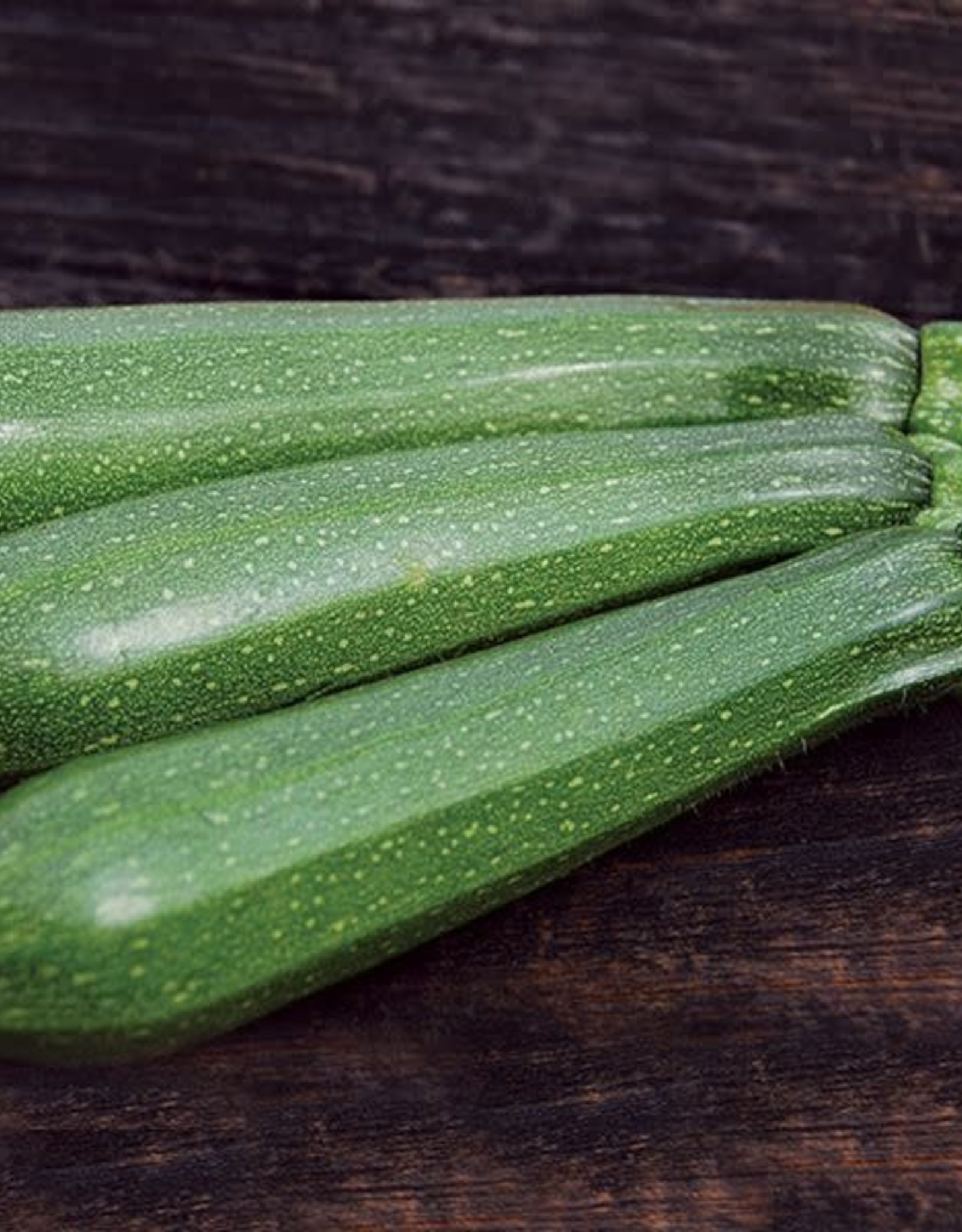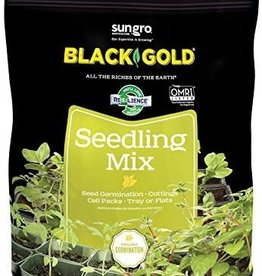HM Dark Green Zucchini 1/8 OZ
| Availability: | In stock (24) |
Photo and Description credit: High Mowing Seeds
Vigorous variety produces good yields of straight, smooth fruits.
An open-pollinated variety best suited to the home garden, with abundant yields of lightly mottled dark green fruits. Pale greenish-white, firm flesh.
- Bush habit
- Harvest at 6-8"
Zucchini- 155-260 seeds/oz. (185 avg), 2,500-4,200 (3,000 avg) seeds/lb; Summer Squash- 262-375 seeds/oz (280 avg), 4,200-6,000 (4,500 avg) seeds/lb; Scallopini- 262-355 seeds/oz (300 avg), 4,200-5,700 (4,800 avg) seeds/lb;
Seeding Rate
Zucchini- 12,000 seeds/acre (4 lbs), using 2 seeds every 18”, 5’ centers. Summer Squash- 12,000 seeds/acre (2.7 lbs), using 2 seeds every 18”, 5’ centers. Scallopini- 12,000 seeds/acre (2.5 lbs), using 2 seeds every 18”, 5’ centers.
Cultural Info
Summer squashes (Cucurbita pepo) are warm-season annuals in the Cucurbitaceae family, which includes cucumbers, melons, winter squash, and gourds. Commonly grown types include:
- Zucchini
- Crookneck
- Specialty types can be scalloped, round or pale green.
Soil Nutrients and Requirements
Plants need loose, fertile, well drained soil with plenty of nitrogen and a pH 5.8-6.8. Fertilize seedlings with fish emulsion if leaves yellow.
Seeding Depth
½-1”
Plant Spacing
12-24”
Row Spacing
5-6'.
When to Sow
Days to maturity are from direct seeding, subtract 2 weeks if transplanting. Direct seed as soon as chance of all frost has passed or start transplants 3-4 weeks before planting date. Optimum soil temperature for germination is about 85ºF and little or no germination occurs below 60ºF. Harden off plants by reducing temperature, water, and fertilizer. Many growers plant multiple successions of summer squash during a season to ensure continuous harvest, transplanting the first succession immediately after frost-free day and the final succession three months before the expected first frost.
Other Considerations
Black plastic mulch and floating row cover can be used to increase soil and air temperature, as well as ward off cucumber beetles which feast on young seedlings and also spread disease.
Harvest
Best quality fruit are harvested at 5 – 8” or smaller, while skin is soft and somewhat glossy. Harvest fruits every other day to for best size and quality and to maintain plants’ productivity.
Storage
Fruits are very perishable, but will store 3 to 4 days at 35 - 40ºF and 90% relative humidity.
Pest Info
- Striped Cucumber beetle feeding can damage young leaves so extensively that plants either die or are stunted in growth. Dipping or spraying seedlings with kaolin clay can significantly deter infestations. Combine clay with insecticidal soap (such as Safer Brand™, see Supplies) or neem (such as Ahimsa Neem Oil). Use of a trap crop preferred by cucumber beetles, such as blue hubbard squash, lures beetles away from main crop. Crop rotation, removal of crop debris to discourage overwintering populations, and use of floating row cover can be effective in controlling cucumber beetles.
- Squash vine borer will cause plants to look wilted even when moisture is plentiful. Slice open stem and remove and destroy.
- Squash bugs can be controlled by handpicking. Bury or compost plant residues at the end of the season.
Disease Info
- Powdery mildew can be checked by providing good air circulation. Give plants wide spacing and eliminate weeds, especially milkweed, marshcress and yellowrocket. Choose resistant varieties.
- Fruit rots such as anthracnose, scab, and fusarium fruit rot are common under wet conditions. Space plants apart, avoid wetting foliage and water early in the day so that leaves can dry.
- Fusarium Wilt is caused by the fungus Fusarium oxysporum f. sp. Melonis (Fom), and can be seed and/or soil borne.
- Bacterial Wilt and Cucumber mosaic virus should be controlled by removing and destroying infected plants.




